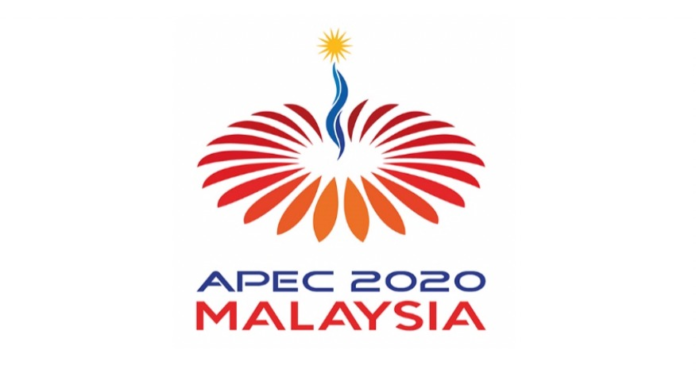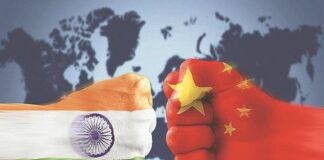The summit of the 21 members Asia-Pacific Economic Cooperation or APEC hosted and chaired by Malaysia this year on 20 November was held in the virtual mode because of the coronavirus pandemic. In response to the growing interdependence of Asia-Pacific economies and with the growing number of regional trade agreements in the other parts of the world this forum of Pacific Rim economies was started in 1989. Its aim has been to establish new markets for agricultural products and raw materials beyond Europe.
By Prof Rajaram Panda
The annual APEC Economic Leaders’ Meeting is attended by the heads of governments of all APEC members including a ministerial-level officer under the name of Chinese Taipei. The meeting rotates annually among the member economies. There are three observers namely the Pacific Islands Forum Secretariat, the Pacific Economic Cooperation Council and the ASEAN Secretariat.
APEC’s 21 members cumulatively account for 40% of the world’s population, 48% of the world’s trade volume and 60% of global GDP. Vietnam has worked closely with other economies to build a strategic vision for a peaceful, stable, dynamic, creative, cohesive, and prosperous Asia-Pacific community. The pandemic caused the APEC bloc to post negative growth during the first half of 2020, the first time in 30 years.
US President Donald Trump, though in low spirit since his election loss on 3 November even when unhappy with the election result, joined the virtual summit meeting this year having skipped for the past three years to counter China’s Xi Jinping who used the forum to counter American protectionism.5 Before the APEC summit, China had scored a colossal trade pact victory, the Regional Comprehensive Economic Cooperation (RCEP) agreement signed in Hanoi by 15 Indo-Pacific nations. Seen as a China-driven initiative, China will now feel emboldened to expand its economic, strategic and military footprint worldwide through its BRI projects after the US began withdrawing from multilateral bodies during Trump’s presidency. As expected, the summit declaration laid stress on ways to mitigate the pandemic’s impact on the economies and people’s health, besides seeking means to strengthen the multilateral trading system.
The official theme of 2020 APEC Summit was “Optimizing Human Potential Towards a Resilient Future of Shared Prosperity: Pivot, Priorities, Progress.” The three priorities identified were improving trade and investment, creating an inclusive digital economy through technology, and promoting creative sustainability.
2020 is an important year to APEC as it marks the end of 25 years of working toward the 1994 Bogor Goals6 on free trade and investment and was, therefore, a moment to review of long-term cooperation programs and building the Post-2020 Vision of APEC. Since joining APEC in 1998 and hosted the first APEC Summit in 2006, Vietnam has played a crucial role in promoting and implementing the Bogor Goals, the direct impact of which started showing results soon.
Vietnam, the ASEAN Chair for 2020 and a non-permanent member of the UN Security Council,7 was supporting and closely coordinating with APEC host Malaysia and other APEC members to ensure that cooperation momentum remained sustained despite the pandemic and that all APEC meetings will issue a joint statement, affirming a cooperative spirit. Vietnam has organised and actively participated in a number APEC meetings and conferences, both in-person and online, including nine ministerial events like The Tourism Ministers Meeting, the Trade Ministers Meeting, the High-level Meeting on Health and the Economy, and the High-Level Policy Dialogue on Food Security. Vietnam being Vice Chairman of the APEC Vision Group (AVG) helped draft important APEC documents like the Post-2020 Vision of APEC, the Post-2020 Energy Vision, and the APEC Structural Reform Program from 2021 to 2025. Vietnam’s ideas have been incorporated in the Bogor Goals Progress Reports, the APEC Strategy for Strengthening Quality Growth Reports, and the Mid-Term Review of the Master Plan on Connectivity from 2015 to 2025.
The 30th summit in 2018 in Papua New Guinea Mores failed to issue a joint statement due to disagreements between the US and China over trade. In 2019, the 31st summit to be hosted by Chile on 16-17 November 2019 was cancelled due to turmoil in the host nation11 and, therefore, there was no statement.
Chinese President remained unperturbed even when the lame-duck President Trump was already defeated and in the winter of office joined the summit and broke tradition by failing to send a representative to deliver a policy speech while pursuing legal challenges against election winner Joe Biden. Surprisingly even after abandoning multilateral trade arrangements such as the Trans Pacific Partnership (TPP) and even threatening to pull the US out of the WTO and remain outside of the RCEP, Trump lunched a strident defence of free trade by remarking: “It is important that the Asia-Pacific should remain the bellwether in safeguarding peace and stability, upholding multilateralism, and fostering an open global economy”, a remarkable turnaround of his already exposed disruptive global trade policy. He further remarked that “Free and open trade and investment cannot be achieved overnight.” His remarks raised eyebrows in capitals where Beijing has been accused of blocking trade amid diplomatic rows, and using its enormous economy as a bargaining chip to strong-arm weaker rivals.
China, which was kept out of the TPP, a giant regional free trade pact that had once been championed by the US President Barack Obama but abandoned by Trump and resurrected by Shinzo Abe as the Comprehensive and Progressive Agreement for Trans-Pacific Partnership (CATPP), has evinced interest to join. If this happens, then China’s over-arching expanding global influence would have been firmly solidified. The RCEP is being seen as a major coup by China and further evidence that Beijing is setting the agenda for global commerce as Washington retreats.
So, what was the outcome of the Kuala Lumpur APEC summit? This time a joint declaration that eluded in the past two preceding summits exhorted the member states to work together to recover from the pandemic. Even agreeing to a statement was a progress in itself as compared to previous summit in 2018 when they were unable to hammer out a joint communiqué due to the escalating tensions between the US and China on trade.
So, what did the leaders achieve? They made a joint appeal for free and fair trade that can help a global economy laid low by the coronavirus pandemic. Malaysian Prime Minister Muhyiddin Yassin remarked that “the impact of (US-China) trade war has been eclipsed by the COVID-19 pandemic”. APEC also “pledged to refrain from backtracking and resorting to protectionist measures to keep markets and borders open”. The joint statement stressed “the importance of a free, open, fair, non-discriminatory, transparent and predictable trade and investment environment” to drive growth during the crisis. What transpired in the summit is Trump who has often attacked China over COVID-19 and sees China as a strategic rival and imposed tariffs on billions of dollars on Chinese goods was rather subdued in his performance. The most important achievement of the summit seems to be the APEC leaders endorsed the APEC Putrajaya Vision 2040 “that will make free and free trade the focus of the APEC agenda for the next two decades”.
However, if the agenda covered in the previous summits and results achieved are objectively analysed, one gets the impression that the summit gatherings of nearly two dozen leaders meetings are more of talking shops rather than a result-oriented forum to guarantee any of the region’s economic or security interests. APEC is just one more addition to the plethora of regional institutions without any single focus. Its existence or absence shall make no difference to any regional issues as there are many more regional organizations that address to more burning issues of the Indo-Pacific region. It is possibly for this reason that India which had been keen to join this forum is no more inclined to become a member of APEC.
This article first appeared in www.vifindia.org and it belongs to them. The author is a research associate with VIF.








